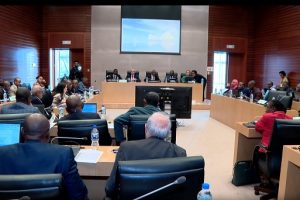
Ethiopia’s strategic alignment of its national policies with continental and international agendas stands as a compelling example of how countries can localize global priorities to meet national development goals. In today’s interconnected world, national progress is increasingly interdependent with regional and global dynamics. The ability of a country to harmonize its development frameworks with broader objectives like Africa’s Agenda 2063 and the United Nations Sustainable Development Goals (SDGs) has become essential for policy effectiveness, resource optimization, and resilience against emerging global challenges.
Over the past few years, the country has actively sought to bridge the gap between national ambition and international expectations. This alignment is not merely a political or diplomatic statement; it is a deliberate strategy grounded in policy coherence, evidence-based planning, and participatory governance. As a developing country with substantial economic, social, and environmental challenges, Ethiopia has recognized that insular policy-making is no longer viable in an era of globalization. Instead, the country has embraced a forward-looking approach that integrates domestic reforms with globally and regionally endorsed development frameworks.
Central to Ethiopia’s approach is the synchronization of its 10-Year Development Plan with Africa’s Agenda 2063. Agenda 2063 outlines Africa’s blueprint for inclusive and sustainable development over the next several decades, emphasizing economic transformation, social inclusion, and institutional accountability. Ethiopia’s decision to align its homegrown development strategy with this continental vision underscores its commitment to being part of Africa’s collective advancement. The 10-Year Plan emphasizes productivity enhancement, human capital development, macroeconomic stability, and sustainable environmental practices, which all resonate strongly with the priorities outlined in Agenda 2063.
In parallel, Ethiopia has demonstrated an equally robust alignment with the global Sustainable Development Goals. The SDGs, adopted by the United Nations in 2015, serve as a comprehensive framework aimed at ending poverty, reducing inequality, and addressing climate change by 2030. Ethiopia’s policy landscape reflects a concerted effort to embed these goals into national strategies. This is evident in the inclusion of targets related to education, health, infrastructure, gender equality, and environmental protection in the national development agenda. The process of alignment is further strengthened by incorporating performance indicators directly derived from the SDGs into Ethiopia’s monitoring and evaluation (M&E) frameworks.
One of the defining features of Ethiopia’s strategy is its emphasis on data-driven governance. The Ethiopian government has invested in developing strong M&E systems that allow for real-time tracking of policy impacts, identification of implementation gaps, and timely recalibration of strategies. These systems are not only tools for internal assessment but also serve as a medium for fostering transparency and public accountability. The country’s focus on evidence-based policy-making ensures that development programs are not only ambitious but also measurable and adaptable.
This commitment to transparent governance was prominently displayed during the 25th anniversary of the African Evaluation Association (AfrEA), which was recently held in Addis Ababa. The event marked a significant milestone for evaluation practices across the continent and highlighted Ethiopia’s leadership in promoting evaluation as a cornerstone of effective policy-making. Speaking at the event, State Minister of Planning and Development Tirumar Abate emphasized that national development cannot be viewed in isolation from regional and global realities. She reiterated that aligning with global agendas enhances not only resource mobilization and knowledge sharing but also policy resilience and adaptability.
Tirumar’s address was more than a ceremonial acknowledgment of global goals; it was a reaffirmation of Ethiopia’s deep-rooted strategic ambition to integrate its policy architecture with international frameworks. She provided insights into how the country is harmonizing its 10-Year Development Plan with both Agenda 2063 and the SDGs. According to the minister, these frameworks serve as essential blueprints that guide the country in pursuing sustainable economic growth, ensuring social equity, and building robust governance structures.
The conference further illuminated the importance of continuous capacity building in sustaining these alignment efforts. A recurring theme throughout the event was the need for training programs, knowledge exchange platforms, and cross-border partnerships to enhance national M&E capabilities. These elements are vital for institutionalizing data collection, analysis, and usage in decision-making processes. Ethiopia has already begun implementing such capacity-building initiatives, recognizing that strong institutions and human capital are prerequisites for effective policy execution.
Ethiopia’s strategy is not without challenges. The country’s ability to sustain this momentum will depend on several critical factors. First and foremost is the need for consistent political will. While there has been a commendable push towards alignment and accountability, future success hinges on a continued commitment from all levels of government to maintain these priorities amid competing national interests. Second, adequate financing is crucial. Development goals—whether national, regional, or global—require substantial investment in infrastructure, social services, and institutional reforms. Mobilizing both domestic and external resources will be a key to maintaining the progress achieved so far.
Moreover, the role of development partners and civil society organizations cannot be overlooked. Ethiopia’s alignment strategy would benefit from deeper collaboration with international donors, NGOs, academic institutions, and private sector actors. Such partnerships can provide technical expertise, financial resources, and innovative approaches that enrich national efforts and ensure inclusivity. Civil society, in particular, plays a vital role in holding governments accountable and ensuring that development benefits are equitably distributed.
The celebration of AfrEA’s 25th anniversary in Addis Ababa served not only as a platform for knowledge exchange but also as a moment of reflection for Ethiopia and other African nations. It reinforced the growing recognition that development cannot be achieved in silos. Cross-border cooperation, shared learning, and collective planning are essential for addressing the continent’s interconnected challenges. Ethiopia’s experience demonstrates that with clear goals, reliable data, and inclusive governance, it is possible to localize global ambitions effectively.
In conclusion, Ethiopia’s strategic alignment of its national development policies with continental and international frameworks is a commendable example of integrated planning in action. By embedding the principles of Agenda 2063 and the SDGs into its national strategy, the country is not only advancing its own development goals but also contributing to broader regional and global progress. Its emphasis on data, transparency, and capacity building lays the foundation for sustainable and inclusive growth. While challenges remain, the country’s proactive and structured approach offers valuable lessons for other nations navigating the complexities of modern development planning. As global and regional agendas continue to evolve, Ethiopia’s model may well serve as a roadmap for harmonized and impactful development across Africa and beyond.
BY DANIEL ALEMAYEHU
THE ETHIOPIAN HERALD WEDNESDAY 25 JUNE 2025





